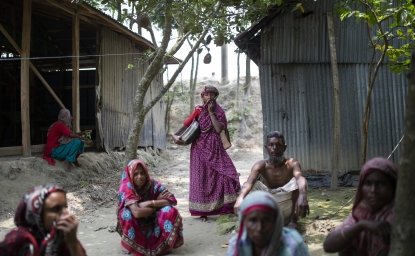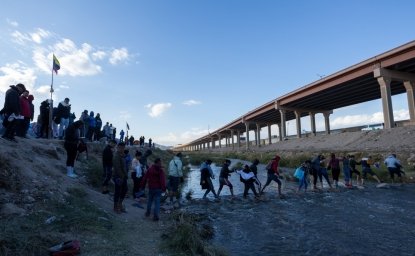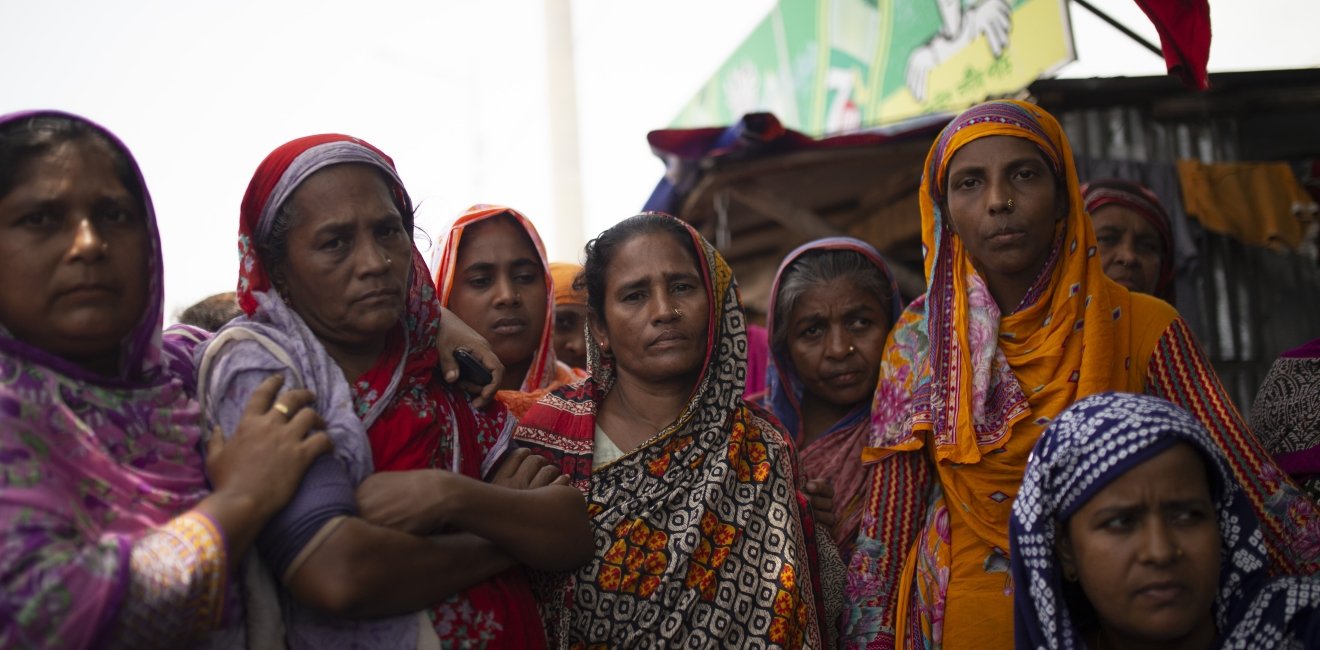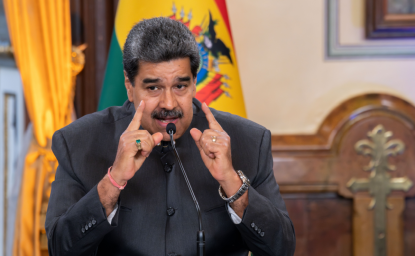Around the world, record levels of displacement, conflict, and the increasingly devastating impacts of accelerating climate change portend a more violent and unstable future. Already, this confluence poses fundamental challenges to lives, livelihoods, and governance systems. The economic and migratory challenges appear particularly daunting. According to World Bank estimates, by 2030 climate change impacts could push a further 100 million people into poverty and by 2050 as many as 216 million people could be internally displaced by climate change.
Current evidence of the increasing number of migrants around the world demonstrates the scale of the problem and tracks important patterns and trends. The Internal Displacement Monitoring Center estimates that in 2021 alone, there were 23.7 million people internally displaced as a result of storms, floods, wildfires, droughts, and other weather events. Yet reaching past statistics to tell first-hand stories of climate migration is essential to understanding what is happening and why. So, what strategic insights can we pull from the experiences of those who are moving and in what ways climate changes are affecting their choices and decisions?
1. Migrants favor the familiar. Most migration is internal—and most international migration occurs between developing countries. Statistics and stories reveal that relatively few people actually want to move, especially to another country. If they must leave their homes, many people’s preference is to move to places that are both culturally and geographically recognizable. Previous generations of migrants and practiced host communities often help ease the transition for new arrivals.
2. Labels such as “climate migrants” can be misleading. Such definitions conceal human agency and obscure other key factors, such as governance, that propel migration. It is rare that one thing drives a person’s decision to move. Generally, a dynamic combination of variables are at play over time and circumstances often dictate choices, even when conditions are dire. Robust policy interventions must avoid narrow labeling and instead take account of this dynamism.
3. Some migrants are more vulnerable than others. Often, those who have relatively greater financial resources, skills, or social networks make a choice to move. Those with comparatively fewer resources are forced to move. Those who put off migration until intense danger or immiseration leaves them with few alternatives represent a disproportionately vulnerable cross-section of the population—with needs that don’t necessarily reflect their pre-crisis levels of prosperity.
4. “Migrant” should not be presumed as a first identity. In part because of climate change, migration trends are changing. Better understanding of identity—and intersectionality—in today's world, including who moves, why they move, and where they’re moving to, is essential. It is important to move past seeing people affected by climate change as primarily potential victims. Migrants are territorial actors and agents of change who can contribute to and enhance system resilience both in their places of origin and arrival. Accurate accounting and storytelling is key to addressing divergent migration-related priorities and supporting effective responses in different geographies.
5. Effective migrant integration requires strong state or municipal capacity. Most migration is to cities and peri-urban areas, many of which are ill-equipped to provide basic access to water, sanitation, and safe housing to large numbers of new arrivals. With the right governance and investments, however, well managed processes of urbanization can contribute to economic growth, reduce criminality, and advance innovation.
6. Protracted climate crises can change migrant calculations, restrict adaptation, and undermine the viability of communities. Chronic or recurrent environmental challenges, such as drought or back-to-back extreme weather events, reduce adaptive capacity, drain resources, and undermine both societal and institutional resilience. Such sequenced events also make it less likely that would-be migrants are able to move proactively, leaving “trapped populations” behind.
7. Scarcity of resources, whether arable land or reliable rain, is a problem. But it is unpredictability and uncertainty in the availability of those resources in any given month or year(s) that restricts adaptation. This uncertainty can erode livelihoods, food security, and social structures as well as compromising physical safety. Uncertain climate impacts also create tipping points that challenge community leadership and traditional conflict resolution mechanisms. For example, entire communities can be pushed out of viability when out-migration undermines the sustainability of local businesses and tax revenue. Knowing at what tipping point the viability of a community is breached can be difficult to predict and will vary from place to place.
8. Understanding the risk vs. resilience equation is important for policy. Research that focuses on the nexus of climate change, migration, and conflict tends to focus on risks or how climate change can exacerbate existing challenges. This approach can exclude case studies that show resilience, especially at the municipal or regional level. And, research that focuses on building resilience tends to emphasize technical solutions over other forms of community resilience building, shaping the kinds of funding and aid that flows to vulnerable countries and people. Much of the time, climate-affected people possess the tools and local understanding required to manage intensifying shocks and stresses. It is pivotal that their input is included and their buy-in secured throughout the ‘climate-proofing’ process.
9. A focus on “new crises” shouldn’t crowd out the old ones. The seas are rising and the rains are changing and people are moving. These things are true and we must prepare better and faster for an altered human and natural landscape. But if conceptions of the threat associated with climate and migration are rooted only in environmental factors, policy solutions may ignore the socio-economic and political context through which the impacts are mediated, leading to misdirected responses and missed opportunities.
10. Times of crisis are extra ripe for disinformation. Disinformation and misinformation factor more prominently than is recognized in the decision-making processes that would-be migrants undertake. Amid the trauma, uncertainty, and economic dislocation of mass migration, both those on the move and those receiving them into their communities can be extra susceptible to accidental and calculated ‘fake news.’ Non-state armed groups and other bad actors are actively using disinformation as a useful recruitment foil.
The people interviewed in this project give voice to the diversity of human experience, helping us to better understand the complexity of climate impacts and tell a more nuanced story of climate migration than statistics alone ever could. Understanding this complexity is essential to generating effective and meaningful responses to change. These stories make clear that migration is an important adaptation strategy, and that understanding the broader context in which climate migration is occurring can surface the kinds of investments and responses that allow people to decide to stay rooted in their communities, or move safely in ways that benefit both the sending and receiving communities. We hope that the oft overlooked and understudied strategic insights derived from the stories of the individuals in this series will inform policies that minimize forced displacement and enable safe, well-managed migration for those who choose to move.
Authors

Former Peacebuilding and Resilience Advisor (2018-2019) & Senior Peacebuilding and Conflict Advisor (2005-2018) U.S. Agency for International Development (USAID)

Environmental Journalist


Environmental Change and Security Program
The Environmental Change and Security Program (ECSP) explores the connections between environmental change, health, and population dynamics and their links to conflict, human insecurity, and foreign policy. Read more

Explore More
Browse Insights & Analysis
Climate & Migration





